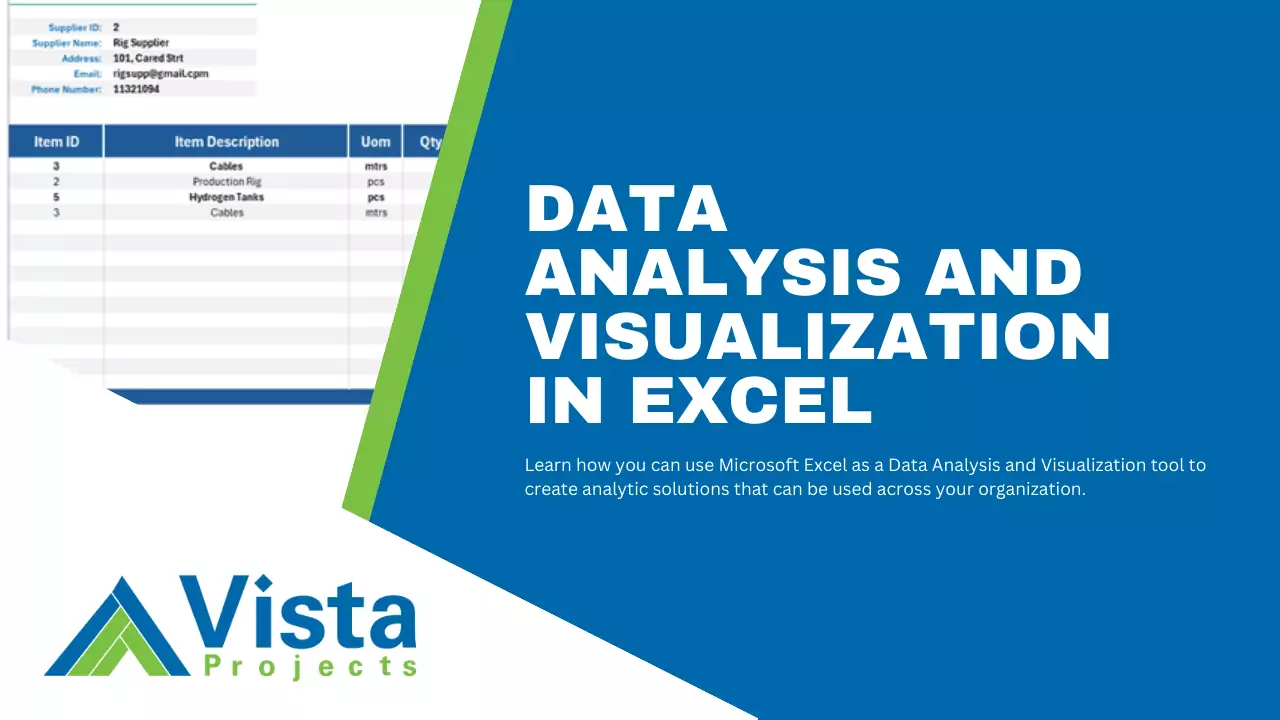Our Data Analysis and Visualization using Excel tutorial is designed to get you acquainted and comfortable using Excel to create analytic solutions that can be used across your organization or for your own projects. You will become familiar with the Power Pivot Excel add-in that lets you work with large datasets, create relationships between different datasets or tables, and use Pivot Tables and Pivot Charts analyse your data. You will also familiarize yourself with dashboard design and data story-telling techniques that will enable you to create eye-catching reports and enable your report viewers to quickly draw insights and make decisions.
Data analytics play a crucial role in decision making processes, performance evaluations, cost reduction & efficiency strategies, gaining insight & understanding market trends, risk management, innovation, quality control, and more. Successful companies have learnt to leverage the power of data through analytics to make better data-driven decisions, optimize processes, and stay competitive in a dynamic business environment.
What you need to get started
Data Analytics is both art and science. It requires some technical skills, analytical thinking, and creative problem solving. To ensure accuracy and reliability in the analytical solution you create, you will need to follow a process that aligns with established protocols in data collection, cleaning, and processing. The list below highlights the key steps/milestones you need to complete when working on a Data Analytics project, also referred to as The Data Science Methodology.
- Define Objectives – This is the start of all data analytic projects. You want to establish the need for analytics. Determine what business questions need answers by engaging the business stakeholders. These include business owners, IT admins, managers, and those who need the analytics solution. You also define what kind of data you need at this stage.
- Data Collection – After establishing the questions that need answered, and the type of data you need, establish ways of collecting the data if the data does not exist.
- Data Cleaning and Transformation – If your data exists, you might need to prepare it for analysis. This stage involves structuring and refining your data so that it is in a format that can be used for analysis. Much of the time in a data analytics project is spent at this stage.
- Data Modelling and Analysis – After cleaning and transforming your data, it is now ready for analysis. Modelling involves establishing connections between different data sources/tables and creating measures and calculations that combine values from different tables. Modelling ensures that all relevant data is “connected” for a complete analysis.
- Data Visualization – After analyzing your data, you will need to show your results in such a way that it is understandable, easy to read, and user friendly. This involves using visual representations of your data such as charts, graphs, maps, etc. The choice of visuals to use depends on the data you want to display and the level of expertise of your audience.

Watch the video below to learn more about data science methodology and the features that make Excel a good data analytic tool.
Looking for project-driven supply chain management software?
Current SCM is the first of its kind – supply chain management software purpose-built to support the most complex procurement and materials management projects. With materials management and vendor document requirements uniquely integrated into the order, Current SCM provides a unified, collaborative platform to streamline the end-to-end process of project-driven procurement and materials management.
If you are engaged in any direct procurement, technical procurement, project procurement or third-party procurement, Current SCM will improve your procurement and materials management workflow. If you are engaged in all four, Current SCM will revolutionize the way you do business.
Contact our sales professionals at Current SCM today!









